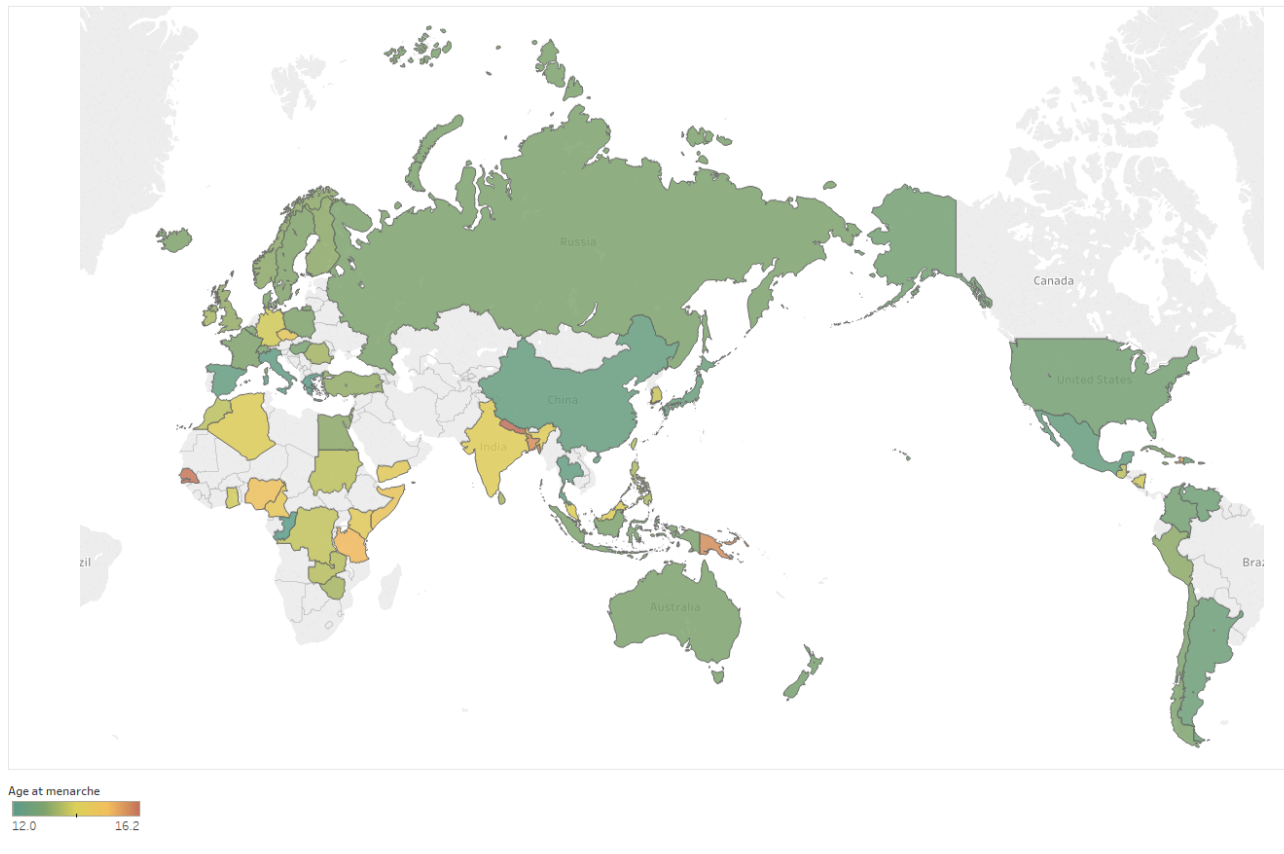Continuing an exploration of all things pubertal, the famous Rabban Shimon ben Gamliel suggests that the onset of puberty depends on where you live. Rabbi Shimon thinks that it depends on your social-economic background.
תניא רשב"ג אומר בנות כרכים תחתון ממהר לבא מפני שרגילות במרחצאות בנות כפרים עליון ממהר לבא מפני שטוחנות ברחים ר"ש בן אלעזר אומר בנות עשירים צד ימין ממהר לבא שנישוף באפקריסותן בנות עניים צד שמאל ממהר לבא מפני ששואבות כדי מים עליהן ואיבעית אימא מפני שנושאין אחיהן על גססיהן
It is taught in a baraita, with regard to the appearance of signs indicating puberty in young women, that Rabban Shimon ben Gamliel says: In the case of young women who reside in cities, the lower sign [pubic hair] appears more quickly than the upper sign [breast growth], because they frequent the bathhouses, which stimulates the growth of the hair. By contrast, in the case of young women who reside in villages, the upper sign appears more quickly than the lower sign, because they grind with mills, which develops their breasts.Rabbi Shimon ben Elazar says: There are differences in the rate of development of the breasts. In the case of the daughters of the wealthy, the growth of the breast on the right side arrives more quickly than that of the left side, as it rubs against their upper body cloaks, which are worn by the wealthy. By contrast, in the case of the daughters of the poor, the growth of the breast on the left side arrives more quickly than that of the right side, because they draw jugs of water on that side. And if you wish, say instead that the left breast develops more quickly because they carry their younger brothers on their left sides.
Factors that influence Puberty
We have already learned that according to Rabbi Hiyya there is a relationship between body weight and the onset of puberty, a concept that has been firmly supported by modern research. On today's page of Talmud Rabban Shimon ben Gamliel suggests that the environment can also influence the onset of puberty. And he was right. There is plenty of evidence from across the world that pubertal development differs between urban and suburban children.
In 1992 researchers compared the pubertal development of seventh graders in rural Iowa and suburban Chicago. They found that in general, the rural girls and boys were more developed than their suburban counterparts. A 2012 study published in the Annals of Human Biology found that there may be different demographic patterns in pubertal status among rural youth compared with urban youth in the US, but the researchers made it hard to figure out which group might be delayed.
Other studies comparing pubertal development among rural and urban youth, primarily from outside the US, consistently report a delayed onset of puberty in rural adolescents as compared to their urban counterparts. For example, a study published in 2000 examined "the prevalence of the first ejaculating emission" for 83,902 Chinese boys aged 9 through 18 years. It found a significant difference between urban and rural boys and even plotted this out on a nice graph, shown below.
Prevalence of post- spermarcheal boys with ages in Chinese urban, rural, and their combined total group. From Cheng-Ye J. and Ohsawa S. Onset of the Release of Spermatozoa (Spermarche) in Chinese Male Youth. Am. J. Hum. Biol. 2000: 12;577–587.
They also found that within a single ethnic group there were significant geographic variations; the age of spermache was later for boys living in the north (where it is colder and wetter) compared to those living in the south (where it is hotter and more humid). However, in contrast to the 1992 US study, the urban Chinese boys had a later onset of puberty. Go figure.
Urban and Rural Children in Kazakhstan and beyond
Another study examined “Puberty in modernizing Kazakhstan”and compared rural and urban children. It used the Kazakhstan Health and Nutrition Examination Survey (KHAN-ES) that studied the effects of the living environment on the nutrition and health of urban and rural Kazakh children. In this study, the researchers reported the relationship between the environment, ethnicity and pubertal status in KHAN-ES children. They found that the environment had a strong influence on the timing of puberty. The rural children had a delayed puberty as compared with urban peers and this was especially evident at B2 and G2 stages
Something is going on. Perhaps rural adolescents have differential environmental exposures compared with urban or suburban adolescents, and some of these may change the rate of pubertal development. A study that examined the age of menarche (the first menstrual period) showed variability across many countries. In Israel, for example, the average age of menarche was 13.3 years; in Nepal it was 16.2 years. Here is what it looks like globally:
Variability of Ages at Menarche and Menopause. From here.
We still have a lot of work to figure out the complex interactions of all the factors that determine the onset of puberty. But both Rabban Shimon ben Gamliel and Rabbi Shimon ben Elazar were correct in linking the environment and socio-economic factors to the way in which our children develop into adults.



